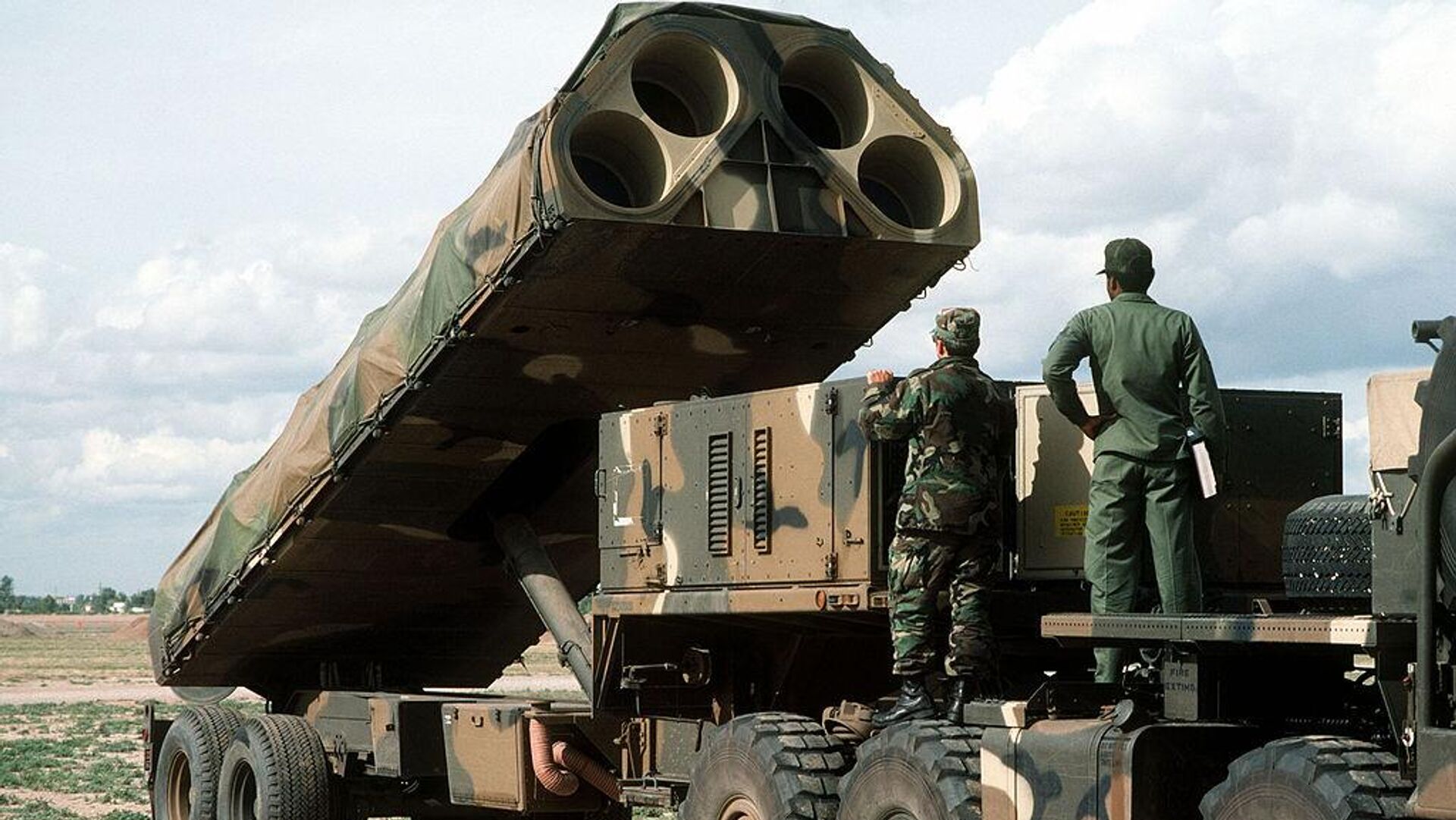Pentagon’s Push to Put Tomahawks in Germany Reveals Long-Standing Agenda to Undermine Arms Control
16:44 GMT 11.07.2024 (Updated: 16:47 GMT 11.07.2024)

© Photo : Rob Marshall / dodmedia.osd.mil
Subscribe
The US Army’s Multi-Domain Task Force plans to deploy Tomahawk cruise, SM-6 SAM and hypersonic missiles in Germany beginning in 2026. The initiative is a flagrant violation of the now-defunct Intermediate-Range Nuclear Forces Treaty with Russia which highlights the impressive consistency of US efforts to undermine strategic security in the region.
Moscow has vowed to respond to Washington’s plans to deploy long-range missile systems in Germany.
“The nature of our reaction will be determined in a calm, professional manner. The military have already begun working on the issue. We will, of course, analyze which specific systems will be discussed…We will determine a military response to this new threat,” Russian Deputy Foreign Minister Sergei Ryabkov told reporters Thursday.
The White House previewed the long-range strike systems the military plans to deploy in Germany in a press release on Wednesday, indicating that they will include:
The Tomahawk - America’s premier, 1980s-designed land-attack cruise missile. Manufactured by Raytheon, the $2 mln apiece weapon has a 450 kg high explosive payload, but can also carry a low-to-intermediate yield nuclear warhead. Tomahawks have a range of 460-2,500 km. The Pentagon was barred from fielding ground-launched Tomahawks under the 1987 Intermediate-Range Nuclear Forces Treaty, which banned missiles in the 500-5,500 km range. Washington unilaterally walked out of the treaty in 2019.
The Standard Missile 6 (SM-6) - the US Navy’s principle long-range air and missile defense projectile, doubling as an anti-ship and land-attack missile. Built by Raytheon and priced at nearly $5 mln each, these weapons have been fielded since 2013, feature a 64 kg blast fragmentation warhead, and have a range of 240-460 km.
The Pentagon also plans to send unspecified ‘developmental hypersonic weapons’ to Germany as part of the deployment. Details are scarce, but the only one of the over half-a-dozen US hypersonics anywhere close to operational is the Army’s ground-based Long-Range Hypersonic Weapon (LRHW). The Lockheed Martin-developed LRHW has a reported range up to 3,000 km. Its payload is unknown.
The primary danger stemming from the deployment of long-range strike systems in Central Europe is their short flight time. In the 1980s, when the US originally deployed nuclear-tipped Pershing and Tomahawk cruise missiles in West Germany, it dramatically increased the risks of a thermonuclear war with the Soviet Union. With a flight time to Moscow of between six and 11 minutes, Soviet officials would have had just minutes to identify, analyze and respond to an enemy attack, greatly increasing tensions, and the risks of an accidental and irreversible escalation.
Forty years on, risks have multiplied, with Washington not only ramping up tensions with Moscow by expanding NATO right up to Russia’s borders, and waging an all-out proxy war against Russia in Ukraine, but setting up components of a ballistic missile shield in Poland and Romania which threatens to untie the hands of Pentagon hawks itching to launch large-scale conventional aggression against Russia via the Prompt Global Strike initiative.
Russia has an array of conventional and strategic ballistic, cruise and hypersonic missiles, as well as missile defense systems, to counter the growing US threat. Still, because the flight time of missiles launched from Central Europe toward Russia is so short, the US action will undoubtedly serve to escalate already raging tensions even further.

28 January 2022, 23:33 GMT
Missile Deployment Violates Key Treaty Scrapped by Washington
The 1987 Intermediate-Range Nuclear Forces Treaty was conceived specifically to reduce the risk of a nuclear conflagration between the nuclear superpowers in Europe, committing both sides to eliminating their stocks of ground-based nuclear-capable missiles and launch platforms in the 500-5,500 km range. For over 30 years, the treaty served to mitigate nuclear risks by limiting Russia and the US’s capabilities in this area, and therefore tempering both sides’ potential fears.
The US walked out on the INF in 2019, citing suspected “violations” of the agreement by Russia. Specifically, Washington claimed Russia’s 9M729 Novator missile had a range far above 500 km. Russia rejected the charge, and took the unprecedented step of declassifying the Novator’s characteristics to try to save the treaty, but to no avail.
While accusing Russia, the US never addressed suspicions of its own potential violations of the INF, including:
The deployment of long range fire components in Romania and Poland under the guise of the Aegis Ashore anti-ballistic missile shield, which Moscow pointed out uses the same MK-41 launchers which could field and fire offensive, nuclear-tipped Tomahawk cruise missiles, beginning in 2016.
The development of the Hera – a US ground-based ‘target missile’ using control and guidance systems from the Pershing II – a class of weapons eliminated under the INF, and has a range of up to 1,200 km. Other US long-range fires classified as ‘target missiles’ which violating the INF’s terms include the Medium Range Target (MRT) and LRALT and E-LRALT missiles, which have a range between 1,000-2,500 km. The same goes for the ground-based version of the AGM-158 cruise missile, whose extended-range variant has a 1,000 km range. All these weapons were developed between the 1990s and the 2010s, while the US was still a party to the INF.
Russia’s military has argued that America’s long-range drones, including the MQ-1 Predator and the MQ-9 Reaper, were also INF violators, given their range of over 1,200 km and ability to carry precision munitions, including small nuclear payloads. These platforms were developed in the early 2000s.
Russia recognized in no-uncertain terms in 2019 where the US decision to scrap the INF would lead, expressing concerns that the move would spark a new global arms race.
“In our view, the US actions which have led to the collapse of the Intermediate-Range Nuclear Forces Treaty will inevitably result in the devaluation and erosion of the entire framework of global security,” President Vladimir Putin said at the time. In the absence of such a strategic arms control agreement, Putin said, Russia cannot be satisfied with the declaration of “peaceful intentions” by the US and its allies.
Subsequent events, culminating in the push to return US long-range ground-based missiles to Europe, have proven Russian concerns to be more than justified.




